History
A ceramic cartridges is constant-amplitude device and thus, if plugged into a high impedance amplifier which does not load it down, the result is very nice pleasing sound without a real need for a RIAA equalization (see for example Connoisseur-SCU-1-Owners-Manual).
However, all modern amplifiers have a low impedance input (47kΩ) which would load down the ceramic cartridge to the point where it sounds tiny and unrealistic.
Since I was restoring a beaten down turntable which came with a BSR SC5H, I proceeded to study and see how I can get a good sound out of it since I only have a low impedance modern amplifier.
Analysis
I decided to build the Sonotone Velocity Equalizer mentioned in few places on the internet:
http://www.roger-russell.com/sonopg/sonopc.htm
https://www.vinylengine.com/turntable_forum/viewtopic.php?t=115997
https://www.lencoheaven.net/forum/index.php?topic=12092.300
This velocity equalizer was meant to adapt the Sonotone 9TA HC cartridge (ceramic) to any Magnetic Cartridge pre-amp which were becoming more common back in the days when Sonotone 9TA HC were still produced. The MC pre-amps do apply the RIAA equalization for Magnetic Cartridges, which are constant-velocity devices.
According to Wireless World, July 1971, B. J. C. Borrows / Ceramic Pickup Equalization, the Sonotone 9TA HC has capacitance of 800pF. The cheap turntable that I’ve salvaged from a flea market came with (what looks like) a BSR SC5H cartridge, and I’ve measured the capacitance across the cartridge left / right outputs to find it is 640pF. On top of this, I could not find the 500pF capacitor (as presented in the initial schematic) for sale and so I had to settle on the 560pF that my vendor had in stock.
The same magazine above suggests an equivalent circuit for a ceramic cartridge as a Voltage source in series with the measured capacitance of the cartridge (but my understanding is that this works as long as the cartridge is assumed to have an ideal 0db flat response across the range of frequencies it is designed for). I measured mine to be 640pF.
Tina TI allows for multiple components to have different values (that’s why the * next to the C1 / C2 capacitors below):
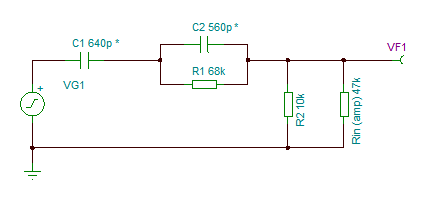
I plugged the values 640pF (BSR SC5H) and 800pF (Sonotone 9TA HC) for C1 and 560pF (that I could buy) and 500pF (suggested) for C2 and ran the simulation:

The simulation is an AC Transfer curve between 30Hz and 15000Hz (which, according to the Roger Russell’s website) was the range that the Sonotone 9Ts were characterized by the vendor. The voltage source VG1 is defined as DC 0V, AC 1V amplitude, 1kHz sine wave. Note that the cartridge response is not perfectly flat at 0dB, but the simulation assumes it is, just to compare the effect of the network adapter.
I could not easily decide what would be the best choice. The value combinations seem to behave identically up until 1kHz, and start converging slowly after that.
Build
Theoretically, I should simulate different values for the components of the Network Adapter, hoping to match its intended response plugged into the Sonotone 9TA HC but with the BSR SC5H as the signal provider.
Given that the turn table is really really cheap and that I did purchase a Sonotone 9TA HC but still deciding on a better turntable to which to mount it on, I decided to just go ahead with a build that allows me to change components later on without too much hassle.
I ordered a small Aluminum box of 5cmx5cmx2.5cm, used a spare protoboard I had lying around and some sockets I had to cut and adapt.
The only photo that may need explanation is that I covered the ‘solder’ part of the protoboard with some electrical tape, to prevent it from touching the aluminum box.
The sound is produces is not dull at all and I am happy with the build.
I may try to rebuild the original ‘tube’ like adapters of the Sonotone Velocity Equalizer, but that would be a subject for another day.
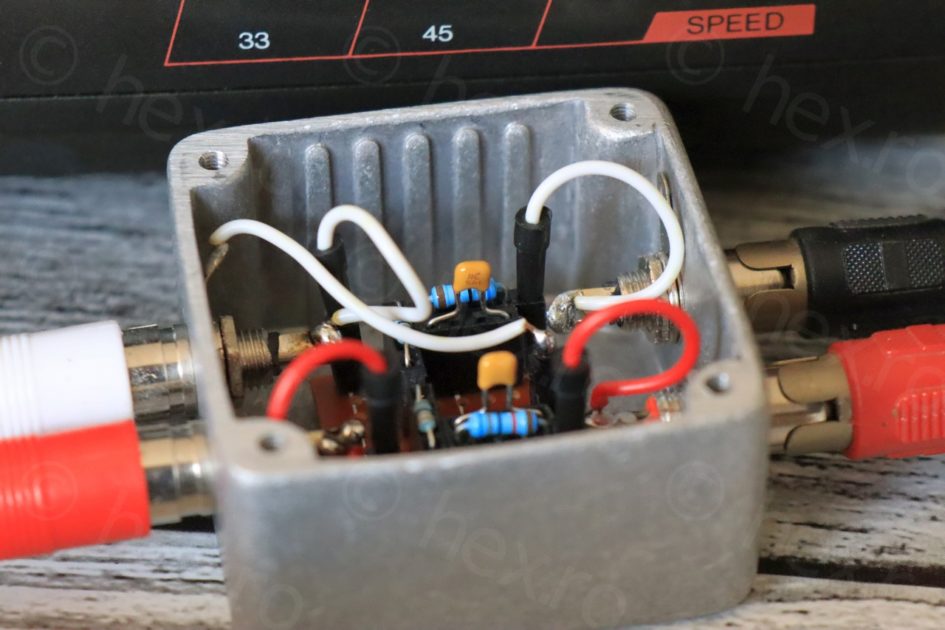
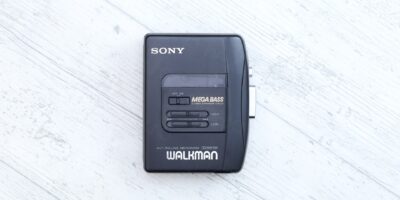
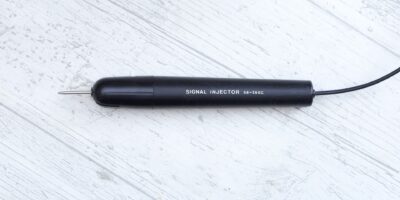
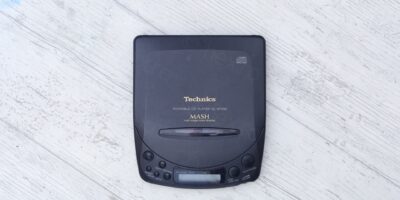
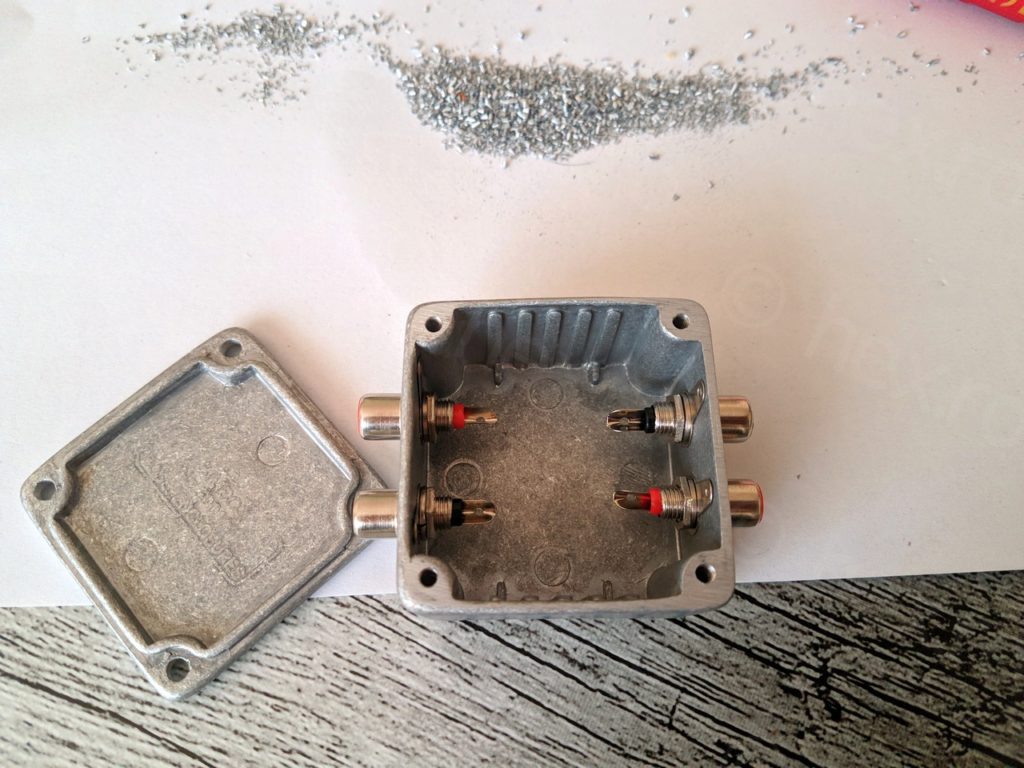
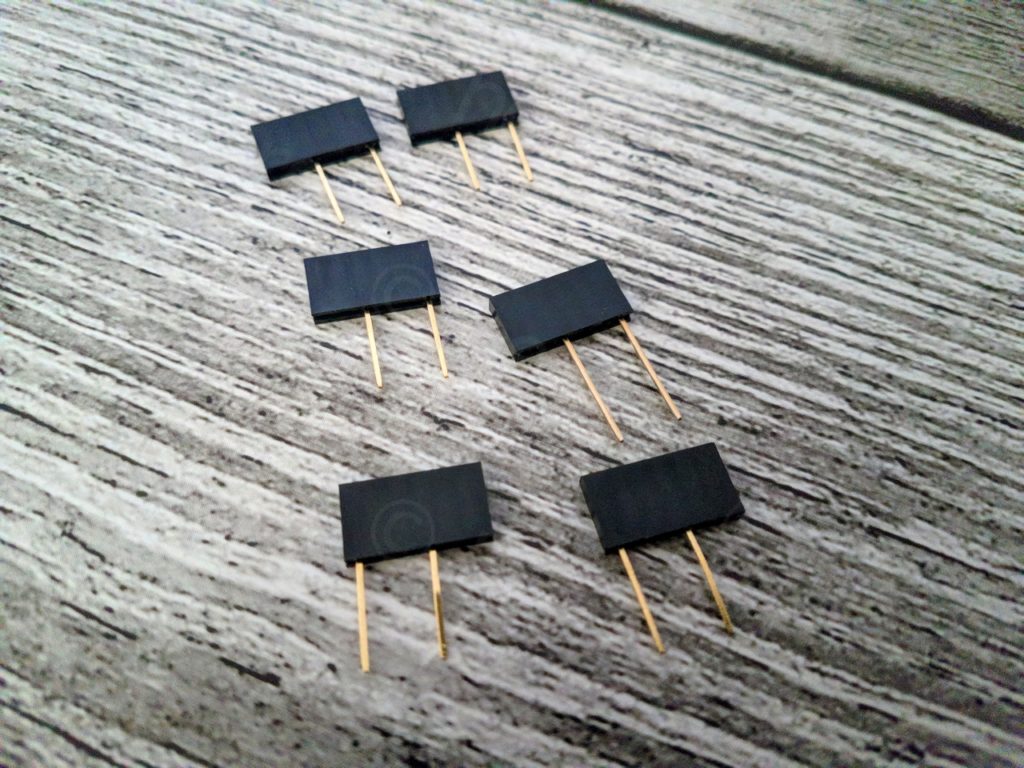
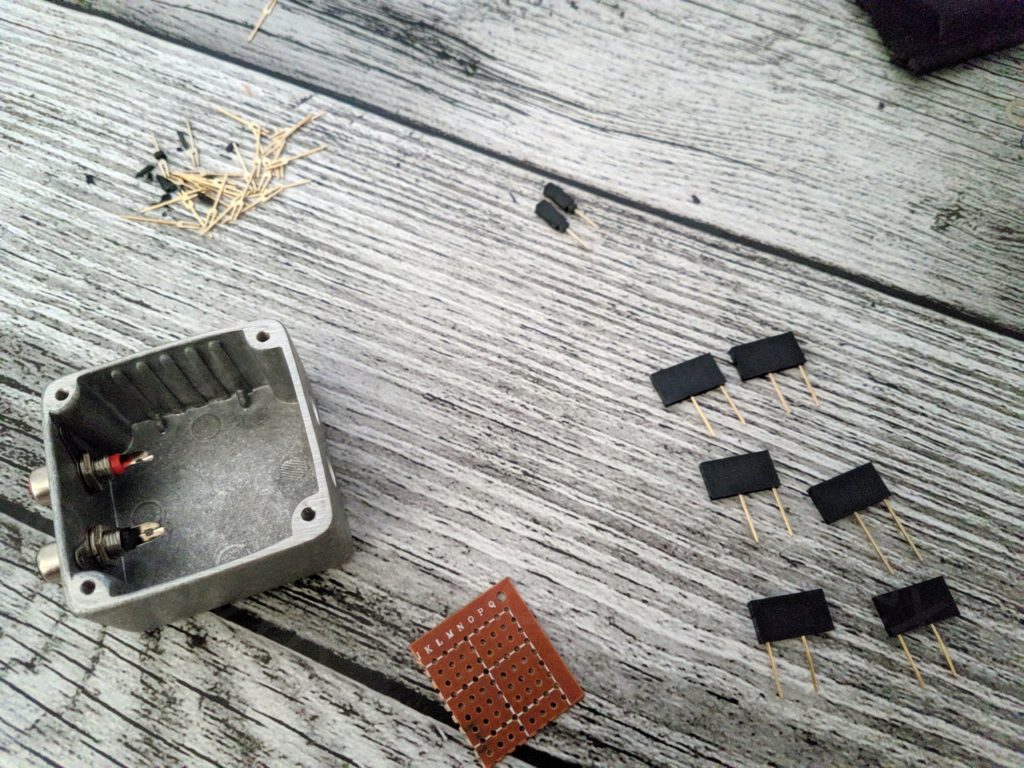
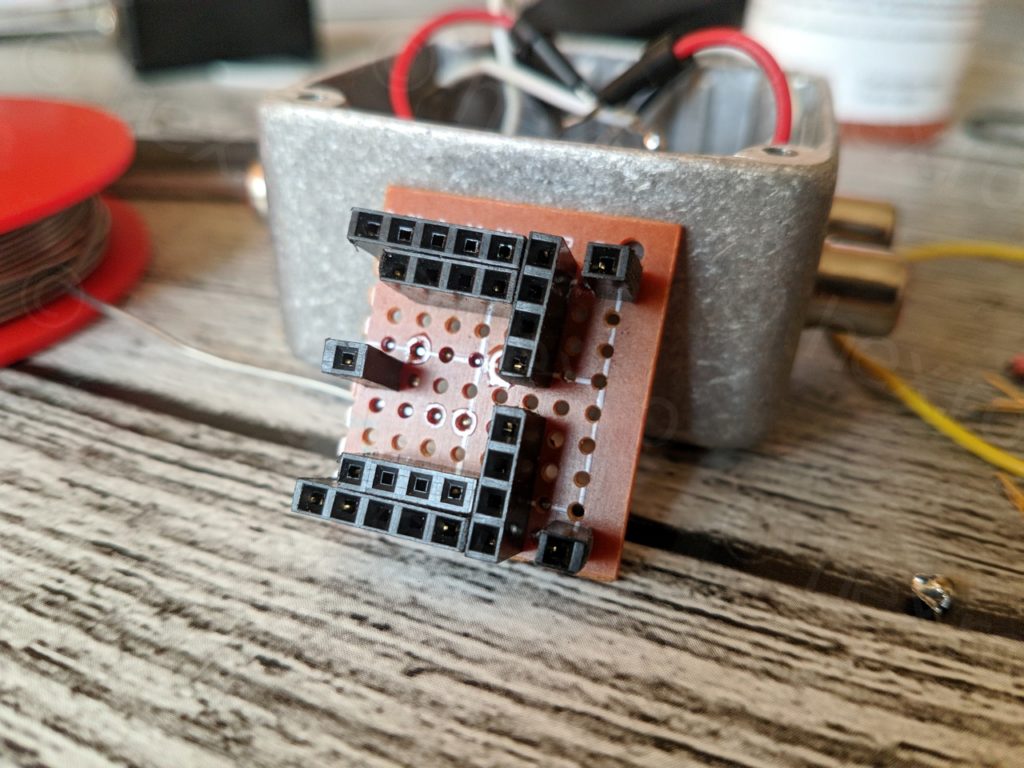

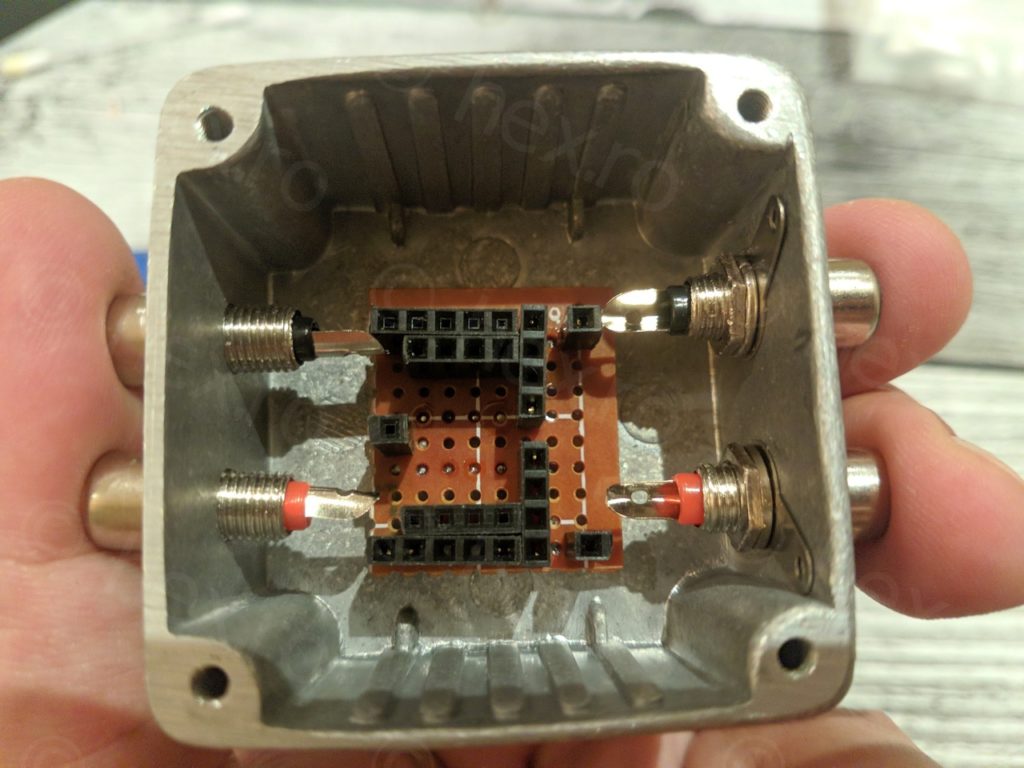
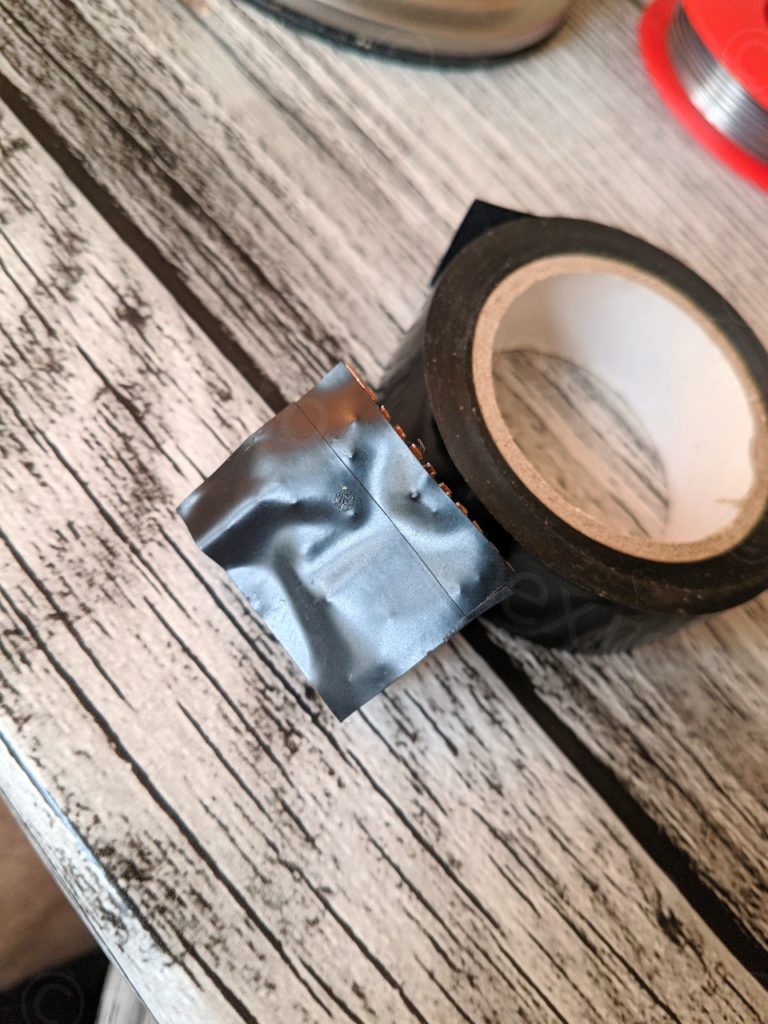
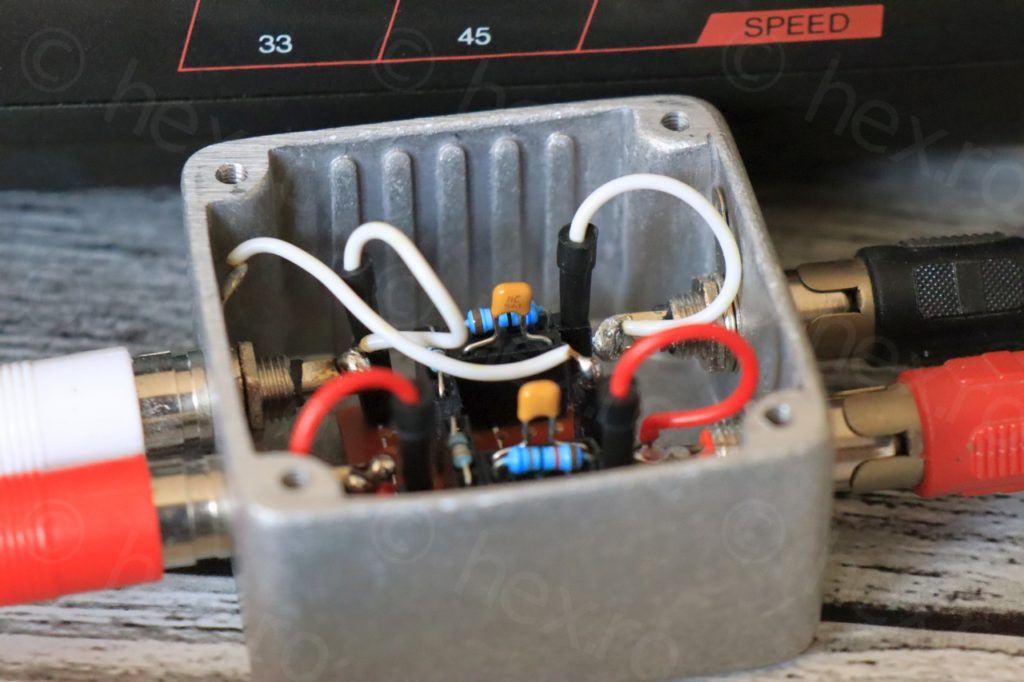
Joseph
Nice work!